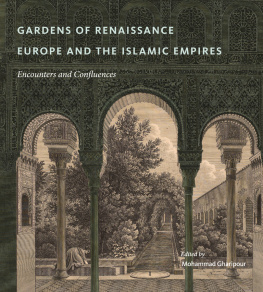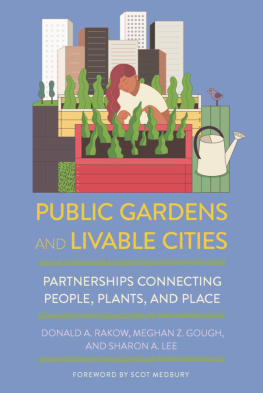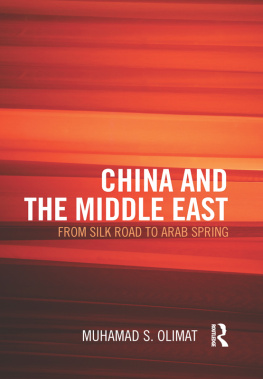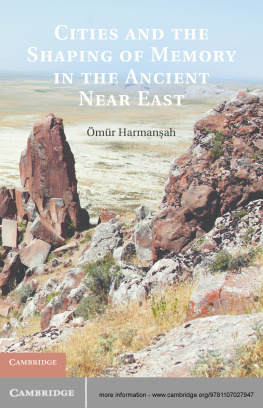Contemporary Urban Landscapes of the Middle East
The role of urban landscape projects in the cities of the Middle East has grown in prominence since the mid-twentieth century, with a gradual shift in emphasis from the private sphere to projects with an increasingly more public function. The contemporary landscape projects, either designed as public plazas or public parks, have played a significant role in transferring the modern Middle Eastern cities to a new era and also in transforming to a newly shaped social culture in which the public has a voice. This book considers what ties these projects to their cultural and political context and what regional and local design elements and concepts have been used in their development.
Mohammad Gharipour is Associate Professor at the School of Architecture and Planning at Morgan State University in Baltimore, USA. He obtained his masters in architecture from the University of Tehran and his Ph.D. in architecture and landscape history at Georgia Institute of Technology, USA. He has received several fellowships and awards and published six books including Persian Gardens and Pavilions: Reflections in History, Poetry and the Arts. He is the founding editor of the International Journal of Islamic Architecture.
Routledge Research in Landscape and Environmental Design
Series Editor:
Terry Clements
Associate Professor, Virginia Tech
Routledge Research in Landscape and Environmental Design is series of academic monographs for scholars working in these disciplines and the overlaps between them. Building on Routledges history of academic rigour and cutting-edge research, the series contributes to the rapidly expanding literature in all areas of landscape and environmental design.
Regions and Designed Landscapes in Georgian England
Sarah Spooner
Immigrant Pastoral
Midwestern Landscapes and Mexican-American Neighborhoods
Susan L. Dieterlen
Landscape and Branding
The Promotion and Production of Place
Nicole Porter
Contemporary Urban Landscapes of the Middle East
Edited by Mohammad Gharipour
Contemporary Urban Landscapes of the Middle East
Edited by Mohammad Gharipour

First published 2016
by Routledge
2 Park Square, Milton Park, Abingdon, Oxon OX14 4RN
and by Routledge
711 Third Avenue, New York, NY 10017
Routledge is an imprint of the Taylor & Francis Group, an informa business
2016 Mohammad Gharipour
The right of Mohammad Gharipour to be identified as the author of the editorial material, and of the authors for their individual chapters, has been asserted in accordance with sections 77 and 78 of the Copyright, Designs and Patents Act 1988.
All rights reserved. No part of this book may be reprinted or reproduced or utilised in any form or by any electronic, mechanical, or other means, now known or hereafter invented, including photocopying and recording, or in any information storage or retrieval system, without permission in writing from the publishers.
Trademark notice: Product or corporate names may be trademarks or registered trademarks, and are used only for identification and explanation without intent to infringe.
British Library Cataloguing-in-Publication Data
A catalogue record for this book is available from the British Library
Library of Congress Cataloging-in-Publication Data
A catalog record has been applied for
ISBN: 978-1-138-84959-4 (hbk)
ISBN: 978-1-315-72546-8 (ebk)
Typeset in Sabon
by Apex CoVantage, LLC
To Douglas C. Allen (19472014):
A devoted teacher, landscape designer, and mentor
Contents
MOHAMMAD GHARIPOUR
JAMES L. WESCOAT JR.
KIVAN KILIN AND DUYGU KAAR
ELISSA ROSENBERG
FARHAN KARIM
KATHLEEN JOHN-ALDER
HOOMAN KOLIJI
AKEL ISMAIL KAHERA
KEVIN MITCHELL
ANNA GRICHTING
HALA F. NASSAR AND ROBERT HEWITT
ASHRAF M. SALAMA
Mohammad Gharipour
The term landscape at once refers to scenery, a specific place, and a holistic entity.
The professions of city planning and landscape architecture emerged from common origins, sharing in the 19th-century reformist ideology that embraced a general optimism and faith in the potential of technology to improve social and environmental conditions, and at the same time, a belief in the essential interrelatedness of the problems of the city.
What, then, constitutes an urban landscape? In contrast to a Western park, which is normally characterized by large expanses of lawn, scattered trees, ornamental shrubbery, and one or more water elements, As such, an urban landscape can be a public space, an urban park, or a municipal garden in any scale that offers recreation to residents and visitors. Typically, however, an urban park will feature open spaces intended for multiple uses, such as solitary contemplation, entertainment, social interactions, and public gatherings of all types. Such parks are likely to include public buildings, playgrounds, fountains, sports fields, picnic facilities, and green areas. Maintained and operated by the local government or private sector at the local and regional levels, the main purpose of an urban landscape is to create a space for the citys residents to pursue leisure activities, while at the same time promoting environmental benefits and creating a more organic relationship between the citys urban fabric and green spaces.
As an evolving entity shaped by both natural and cultural processes, the urban landscape establishes a constant dialogue between people and the physical space it occupies. These dynamic processes relate the physical form to its public and cultural uses over time.
The concept of an urban landscape as a functioning system helps to break down the false dichotomy between city and nature that was deeply embedded in 19th-century thought and gave rise to the American park movement.
The contemporary activist David Engwicht explains that cities developed to facilitate the exchange of information, friendship, material goods, culture, knowledge, insight, and skills, as well as the cultivation of emotional, psychological, and spiritual support.
The design of the urban park or landscape, as both a functioning system and a poetic idea, provides an opportunity to apply an integrated strategy and to play with topography, water systems, and landscape elements. Landscape architect Anne Whiston Spirn emphasizes the poetic aspect of the urban landscape:
The urban landscape is more than a symphony, a poem, sculpture, a dance, or a scientific experiment. It is the setting in which people dwell, living every day. This aesthetic, as applied to the urban landscape, must provide satisfaction on multiple levels: on the level of the senses aroused, the functions served, the opportunities for doing provided, and the symbolic associations engendered. These multiple layers of meaning, when congruent, will resonate, combining complexity and coherence, amplifying the aesthetic experience of the city.
As a public place, each urban landscape features an objective identity, but a subjective image. The objective elements include physical components such as streets or plants, whereas the subjective aspects refer to human perception.
The American philanthropist David Gobel writes, The city cannot derive its meaning from the infrastructure the water supply, sewers, bridges, or even the information networks.










